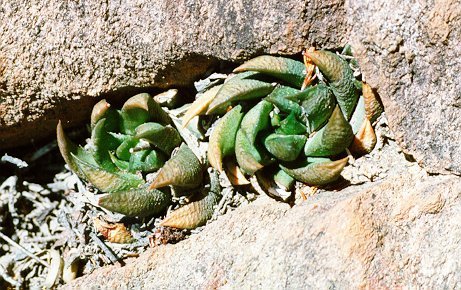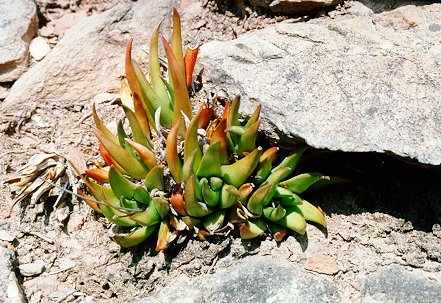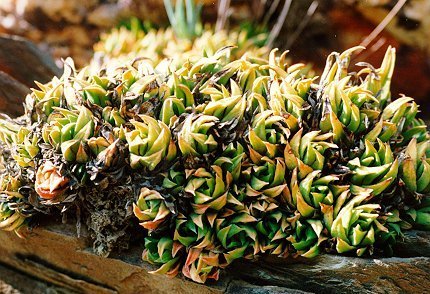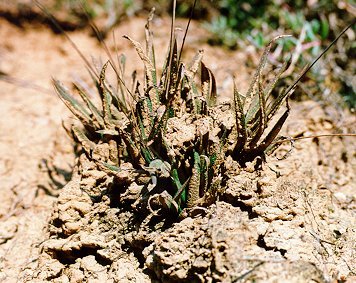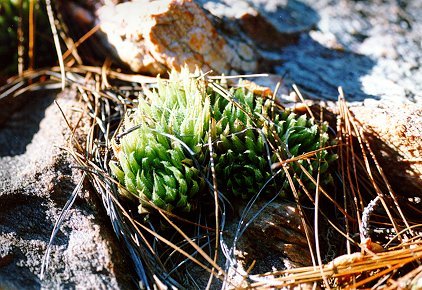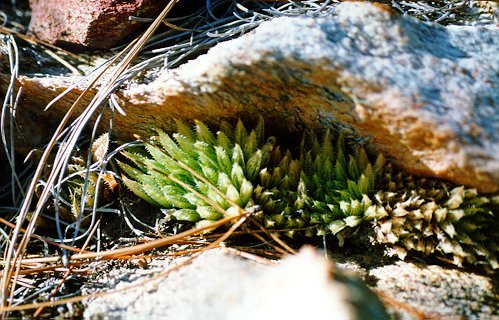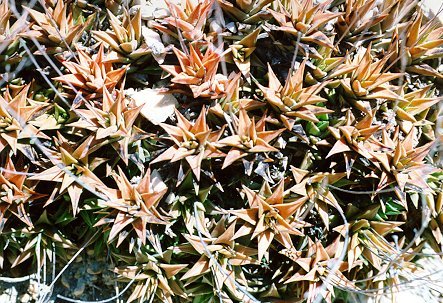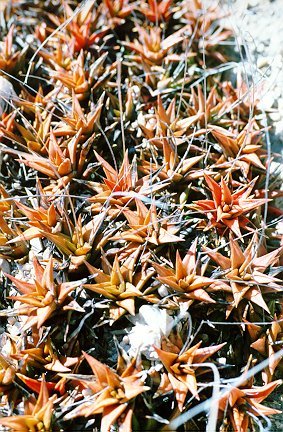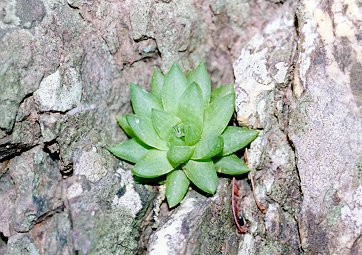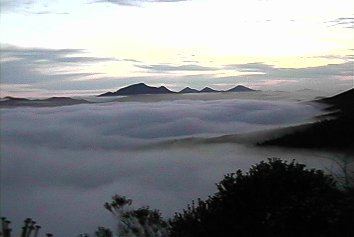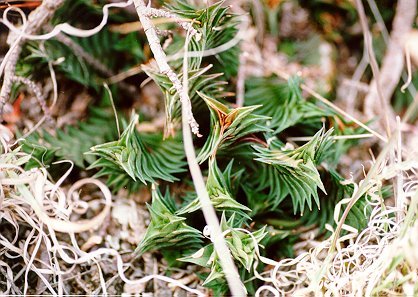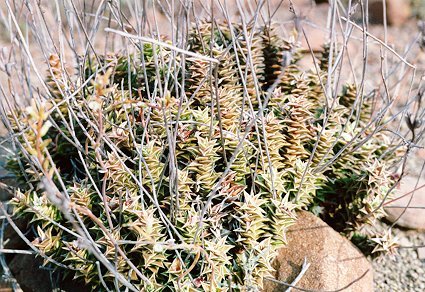For the next two days we did a lot of climbing in Schoemanspoort studying the interactions between H. starkiana and H. scabra. We also saw H. graminifolia, H. unicolor v. helmiae, H smitii, and others. Bruce Bayer’s concept of species and variety of H. starkiana, var. lateganiae, H. scabra, var. morrisiae, and H. smitii may have changed due to the various forms and interactions we saw here.
Haworthia scabra, H. starkiana, H. starkiana var. lateganiae, H. scabra (long form emerging from mud).
South of Oudtshoorn we went to see the new species H. outeniquensis. Bayer will be formally describing this species in the new book. This plant was growing in a very untypical habitat, in shade under pine trees in pine needle mulch. I was dumbfounded. I would never have even thought to have looked in this habitat for a Haworthia. Later we stopped at a nice population of H. emelyae. That night Bruce let me read through the manuscript for the new book. The manuscript is almost complete. Bruce and Kobus were working on completing the photographs. Getting better pictures was one of the reasons for the trip to Oudtshoorn. The work on the new book is incredible! Thousands of hours of work.
Haworthia outeniquensis nomen nudum.
Another new Haworthia we went to look at was east of Oudtshoorn on the top of a mountain. Bruce will be describing this plant in the new book. He called it H. pungens because the leaves are stiff and the tips are pointed and hard. It grows like an Astroloba, but has Haworthia flowers. I think it is somewhat like H. glauca, but larger and different. It was interesting to see how the clumps grew in a bow shape to catch gravel coming down the hillside, scree traps. Possibly the gravel keeps the roots cool? We also took a drive and a few short hikes in the northern end of Prince Alfred’s Pass where we found H. scabra and H. cymbiformis.
Haworthia pungens nomen nudum (2), H. cymbiformis, and above the clouds in Prince Alfred’s Pass.
We parted company on Sunday afternoon, Bruce and Kobus heading west, Gretchen and I east. We stopped in Steytlerville where we found H. decipiens. It was getting dark. Next time I go to South Africa I’m going to spend more time in this area. We then made Graaff Reinet our base for a couple days where we found H. viscosa and Astroloba foliolosa (I think). I couldn’t find H. marumiana. I later found out I had the right hill but didn’t climb high enough or look close enough.
Haworthia viscosa, Astroloba foliolosa.
We spent most of Wednesday driving northwest to Upington and Augrabies Falls. Then we went further north to the southern end of Kalahari Gemsbok National Park. We didn’t see lion but we did hear them. We saw a number of different antelope and wildebeest, monkeys, baboons, flamingos and all sorts of other birds. Kalahari is a sandy lonely beautiful place.
I wished we had more time. By the end of the week we were headed back south through Springbok. Namaqualand was green. There were a number of plants in flower. I saw bunches of different kinds of Mesembs including Lithops and Conophytum. I also saw H. venosa tesselata, and H. norteri near Vanrhynsdorp and Clanwilliam. By Sunday evening we were back at the Venters where we had dinner with Bruce and Daphne Bayer, Steve Hammer, and the Venters. After dinner we looked through a hundred or so slides, selecting some for the book. On Monday we went to see Etwin Aslander and his nursery and then back to Kirsenbosch for lunch and on to the airport for the flights back to the US. I wished I had another couple weeks (months). I’ll just have to go back again someday. Actually I’m thinking of taking my wife Paula and our now seven-year-old daughter Claire in say 3 years.

